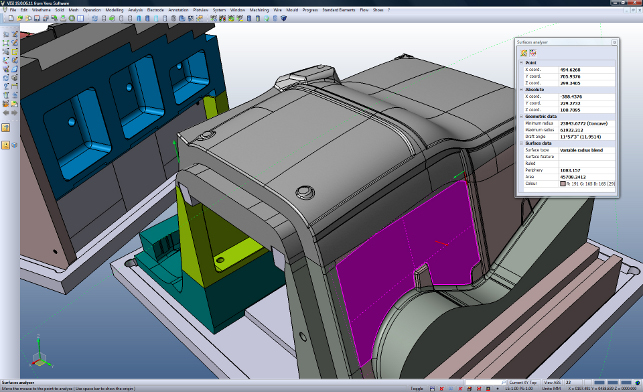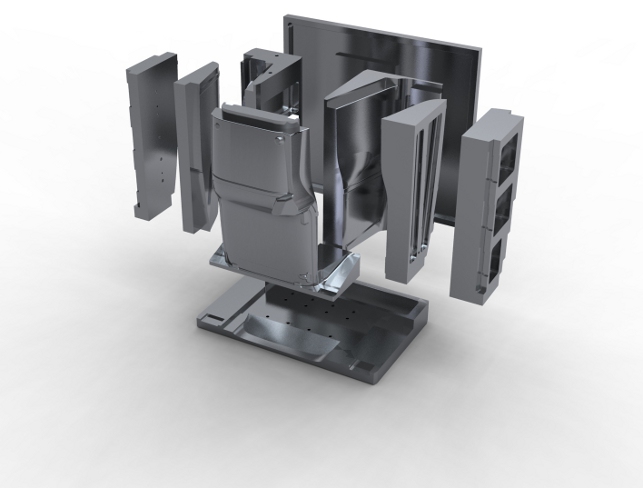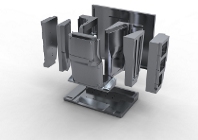
Using CAM to help make production of aircraft seating more lightweight
The volatile nature of fuel prices has forced the aerospace industry to make weight reduction a high priority – leading to tooling for lightweight materials being a must.
Start up company DeltaCAD, based in Devon, has taken the initiative, providing a leading aerospace firm with aluminium tooling for carbon composite seat shells to be used on major civil airlines.
Reducing the weight of aircraft seating it significantly reduces overall aviation fuel consumption and CO2 emissions throughout the operational lifetime of the aircraft, with every kilogram of weight contributing to the running costs of an aircraft to the carrier.
The original CAD model was provided by the customer as a Unigraphics NX file with the part analysis and tool design performed using VISI Modelling from Vero Software.
“VISI is very tolerant of non-native data,” explains Dean Challis, DeltaCAD’s founder. “Often when models are originally designed, the manufacturing requirements are not always known. To make a part manufacturable it is vital to interact with the data and make the relevant changes.
These particular components were modified to remove some undercut areas and apply blend radii on sharp edges. Blending is typically a complex task, it often being necessary to explode a model into surfaces and manually apply the CAD modifications.
“VISI is very strong at switching between a solid and surface environment and this allows us to make complex changes where other CAD systems often fall over,” states Challis.

VISI is used to explode the model to help blend radii on sharp edges
All toolpaths for manufacture were programmed using VISI Machining and the aluminium tooling was milled using XYZ 1060 high speed vertical machining centres running Siemens 840D ShopMill Control, with WNT solid carbide end mills that have been specifically designed for cutting softer materials such as aluminium.
The geometry of the tooling makes it possible to cut full slots to 1.5 x D depth with high feed rates, typically twice that of traditional steel cutting tools – giving the cutters a tolling life of approximately 3,000 hours.
The manufacturers use VISI to accurately predict the actual toolpath cutting time and program accordingly, allowing a set of overnight programs that will run for up to 14 hours.
For all the carbon fibre junkies: the material used was a 2 x 2 twill weave cloth that is pre-impregnated with epoxy resin so that when the tool is brought up to temp (120-140 degrees depending on resin used) the resin cures within approximately 1 hour. The tool is then cooled as quickly as possible and the top half of the tool is removed, exposing the carbon fibre moulding.
The properties of the carbon fibre such as high tensile strength, low weight, and low thermal expansion make it very popular in aerospace industries, as well as in civil engineering, military, and competition sports – meaning such tooling and manufacturing techniques have enormous potential for expansion, and benefits to gain from the CAM software available.

The final tooling ready to accept its carbon fibre

Cutting costs of plane seating using latest tooling aids for carbon fibre
Default






